Common Structures in General Resource Theory
UTS Centre for Quantum Software and Information
Understand common structure in different Resource Theories
[Tuesday morning: Andreas Winter: Resource theories of quantum channels]
[Tuesday afternoon: Gerardo Adesso: Every convex quantum resource is useful for channel discrimination]
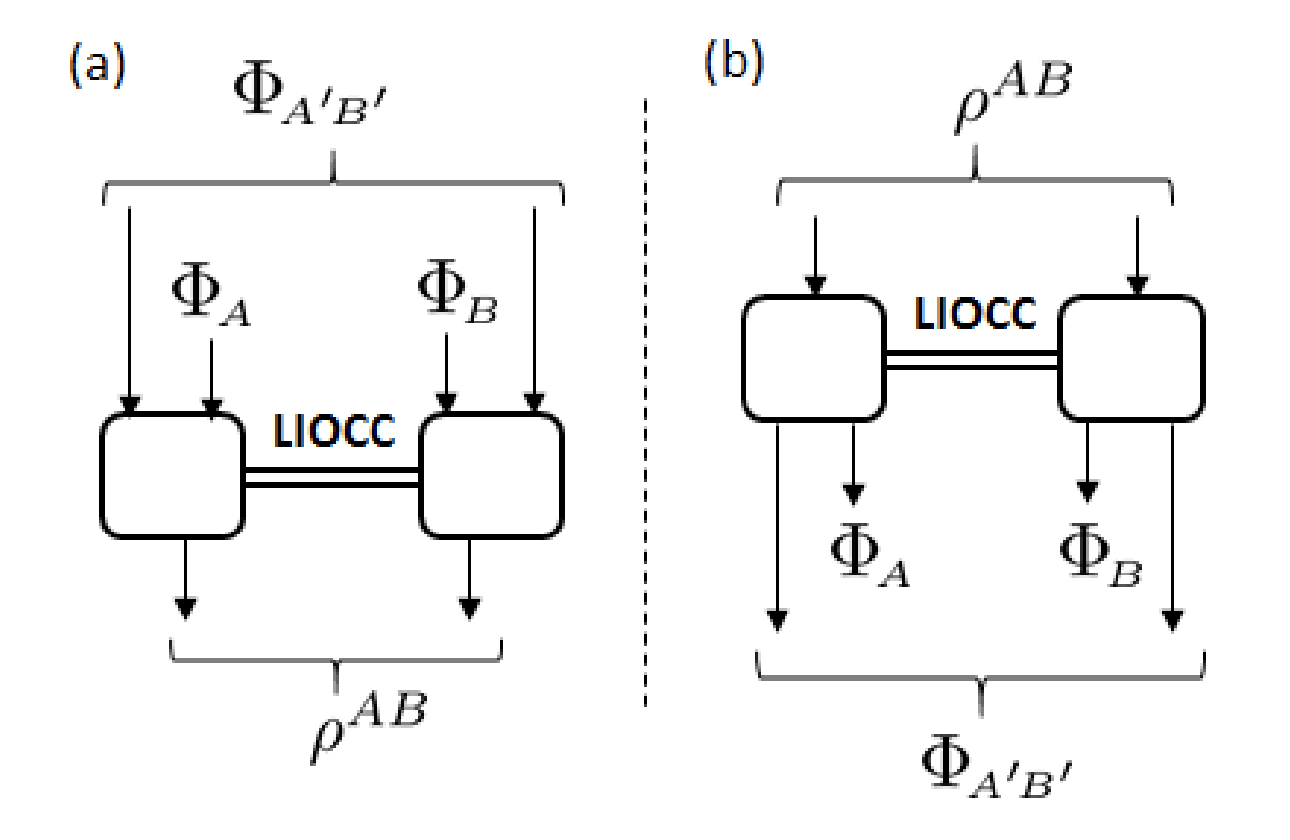



Outlines
-
General resource distillation
-
Hierarchy of quantum coherence operations
-
General resource quantification
Resource Theory
(1): Free States: \(\mathcal{F}\)
(2): Free Operations: \(\mathcal{O}\)
Part I:
How to quantity the amount of resources?
Anurag Anshu, MH, Rahul Jain. Quantifying resource in catalytic resource theory. Physical Review Letters, vol. 121, p. 190504 (2018). [arXiv:1708.00381].
Main Result:
The amount of resource in \(\rho_M\) is equal to \(E^\infty(\rho_M)\).
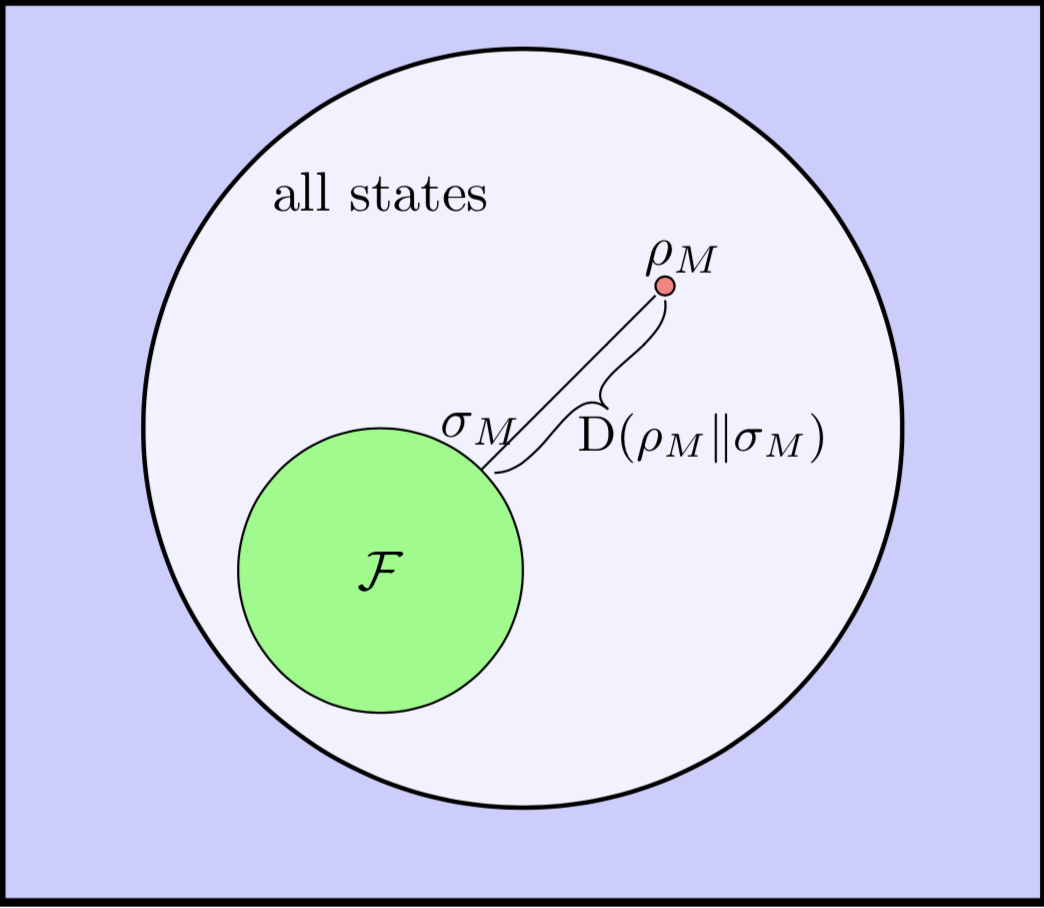
Fernando and Gilad, PRL 2015.
It works for
1. Free States form a convex and close set.
2. Free States remain free under tensor product and partial trace.
[Tuesday morning: Andreas Winter: Resource theories of quantum channels]
Fernando and Gilad, PRL 2015.
Concrete Examples
1. Entanglement
2. Coherence
3. Asymmetry
4. Purity
Regularized Relative Entropy of Entanglement is a right measure for the "quantumness".
Resolved an open question in [1].
[1] Groisman, Popescu, and Winter, “Quantum, classical, and total amount of correlations in a quantum state,” Phys. Rev. A, vol. 72, p. 032317, 2005.
Remark
[2] Mario Berta and Christian Majenz. Phys. Rev. Lett. 121, 190503 2018.

Generalize and Recover

Setup
1. The amount of resource equals the amount of noise used to erase it.
2. Catalyst is allowed.
[1] Groisman, Popescu, and Winter, “Quantum, classical, and total amount of correlations in a quantum state,” Phys. Rev. A, vol. 72, p. 032317, 2005.
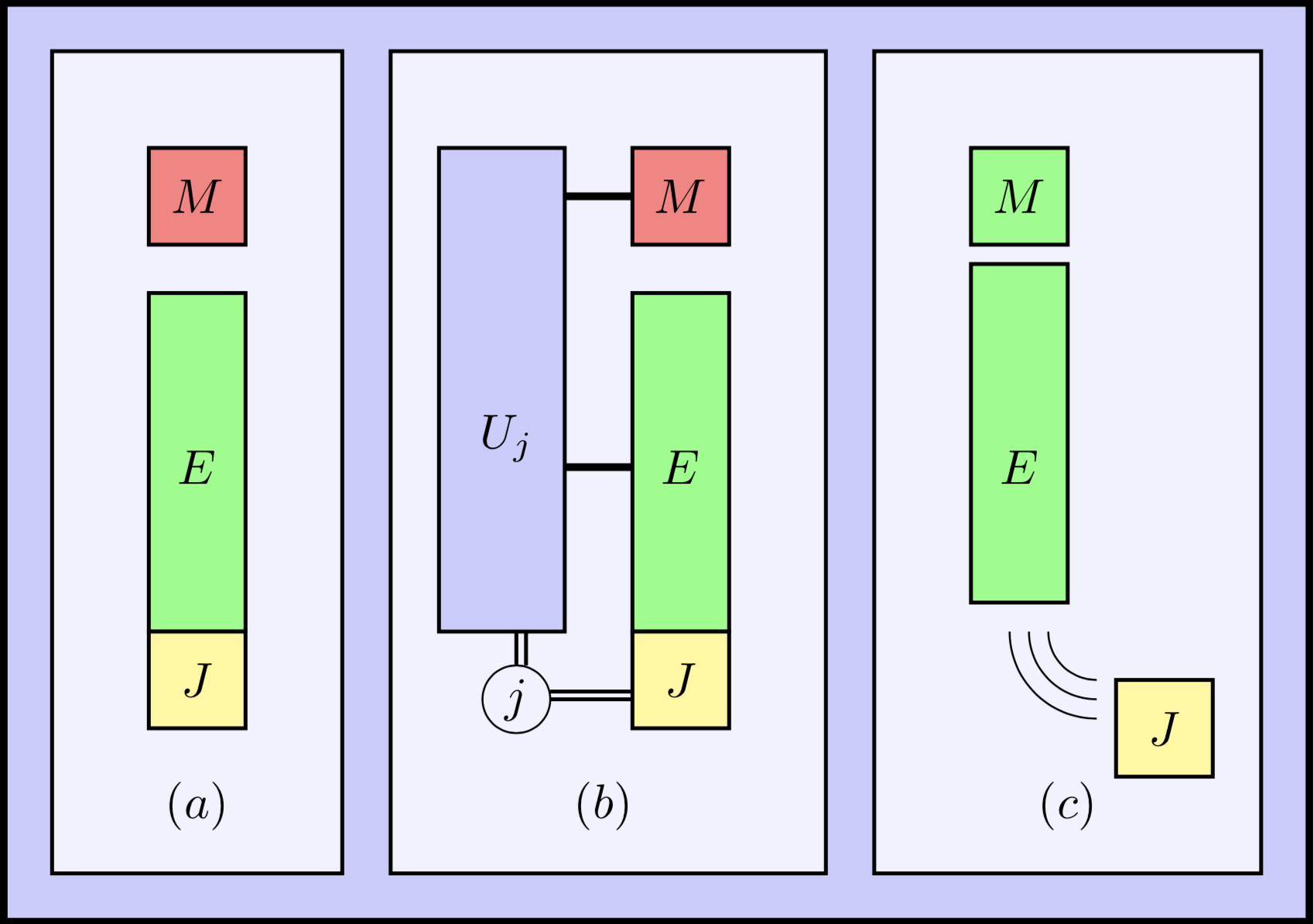
[Wednesday morning: Anurag Anshu: Efficient Mehod for one-shot Quantum Communication]
\( (\epsilon, \log|J|)\)-catalytic erasure of \(\rho_M\) if \(\exists\) \(\sigma_M\in \mathcal{F}\) such that
Let
\(\exists\) \((\epsilon+\delta, \log k)\)-catalytic erasure of \(\rho_{M}\), where
Achievability
One Sentence Proof:
Convex Splitting Lemma
For every \((\epsilon, \log|J|)\)- erasure of \(\rho_M\),
Converse
Final Remarks
1. Works in the one-shot regime.
2. Matching One-shot Bounds
Part II:
Distillation in General Resource Theory
[1] Madhav K. Vijayan, Eric Chitambar, and Min-Hsiu Hsieh, arXiv:1906.04959.
[2] Zi-Wen Liu, Kaifeng Bu, and Ryuji Takagi. Phys. Rev. Lett. 123, 020401 (2019)
One-shot distillation
One-shot distillable rate
It works for
1. Free States form a convex and close set.
- Entanglement
- Coherence
- Purity
[2] Zi-Wen Liu, Kaifeng Bu, and Ryuji Takagi. Phys. Rev. Lett. 123, 020401 (2019)
[1] Madhav K. Vijayan, Eric Chitambar, MH. J. Phys. A: Math. Theor. 51, 414001 (2018). [arXiv:1804.06554]
[Tuesday Morning: Julio de Vicente: A resource theory of entanglement with a unique multipartite maximally entangled state]
[1] Madhav K. Vijayan, Eric Chitambar, MH. J. Phys. A: Math. Theor. 51, 414001 (2018). [arXiv:1804.06554]
Main Result
Converse
| GRT | Entanglement | Coherence |
|---|
\(G_{min}(\rho)\)
\(S_{min}(\rho_\psi)\)
\(S_{min}(\Delta(\psi))\)
Proof Sketch
Direct Coding
If
then
Proof Sketch
[Tuesday: Julio de Vicente: A resource theory of entanglement with a unique multipartite maximally entangled state]
Part III:
Hierarchy of coherence operations
Hayata Yamasaki, Madhav Krishnan, Min-Hsiu Hsieh. In preparation.
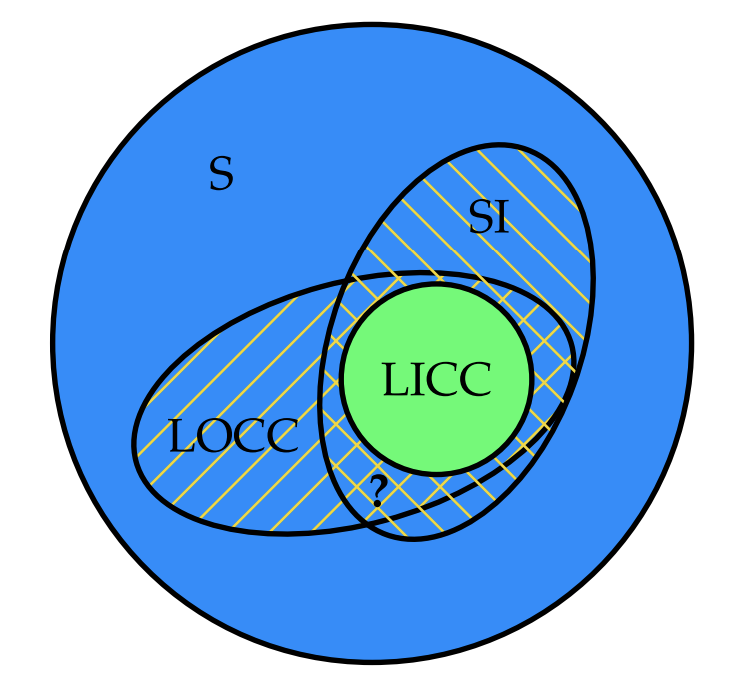
Alexander Streltsov, Swapan Rana, Manabendra Nath Bera, and Maciej Lewenstein. Phys. Rev. X 7, 011024 (2017).
Main Result
There is a strict separation between the set r-\(\mathsf{LICC}\) and the set r-\(\mathsf{LOCC} \cap_{op} \mathsf{IO}\).
Example of 1-\(\mathsf{LOCC} \cap_{op} \mathsf{IO}\)
In the context of entanglement distillation.
r-\(\mathsf{LOCC} \cap_{op} \mathsf{IO}\) can distill one ebit, but r-\(\mathsf{LICC}\) cannot!
Proof Idea
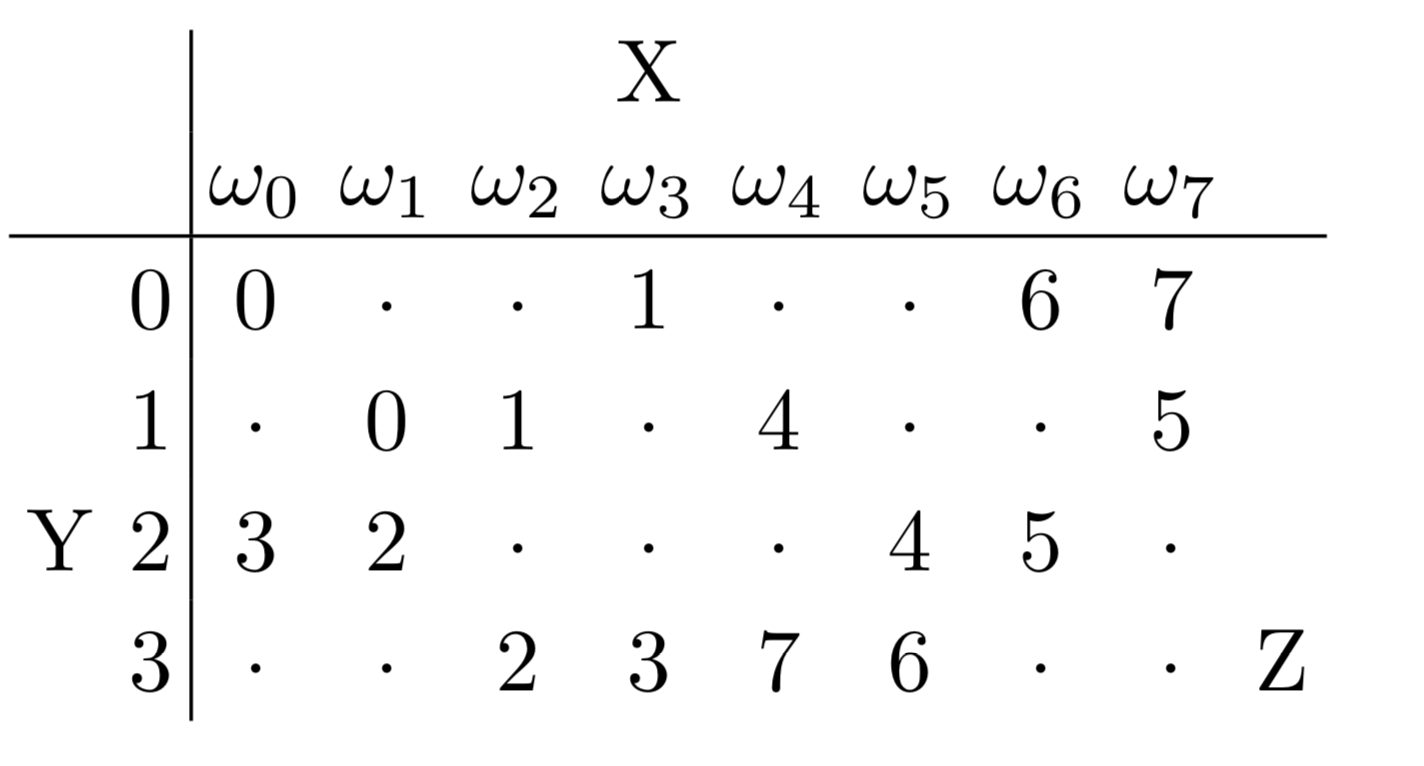
Eric Chitambar and Min-Hsiu Hsieh. Nature Communications 8, no. 2086 (2017).
Alice's Measurement
Bob's Measurement
Free states remain free under these operations!
Impossibility of 2-LICC
1. Schmidt Rank cannot be increased under LICC.
2. Consider all possible choices of incoherent Kraus operators.
Thank you for your attention!
[2] Anurag Anshu, MH, Rahul Jain. Quantifying resource in catalytic resource theory. PRL vol. 121, p. 190504 (2018). [arXiv:1708.00381]
[1] Eric Chitambar, MH. Relating the Resource Theories of Entanglement and Quantum Coherence. PRL, vol. 117, p. 020402 (2016). [arXiv:1509.07458]
[4] Hayata Yamasaki, Madhav Krishnan Vijayan, MH. Hierarchy of quantum coherence operations. In preparation.
[3] Madhav Krishnan Vijayan, Eric Chitambar, MH. One-Shot distillation in a General Resource Theory. [arXiv:1906.04959]
Part IV:
Multipartite Inequivalent Coherence Classes
[4] Yu Luo, Yongming Li, MH. Inequivalent Multipartite Coherence Classes and New Coherence Monotones. [arXiv:1807.06308].
How many are there for 3-qubit coherence states?
For 3 qubits, there are only two inequivalent entanglement classes under SLOCC.
There are already infinite many inequivalent coherence classes under SLICC for two qubits.
Main Result
# of product
terms
Classification
General Resource Theory
By Lawrence Min-Hsiu Hsieh
General Resource Theory
Banff Conference. July 2019
- 213



